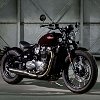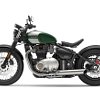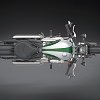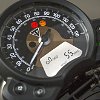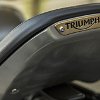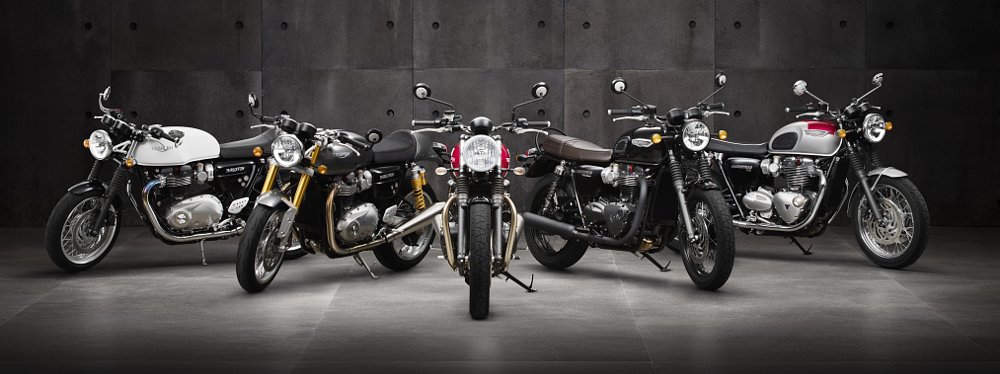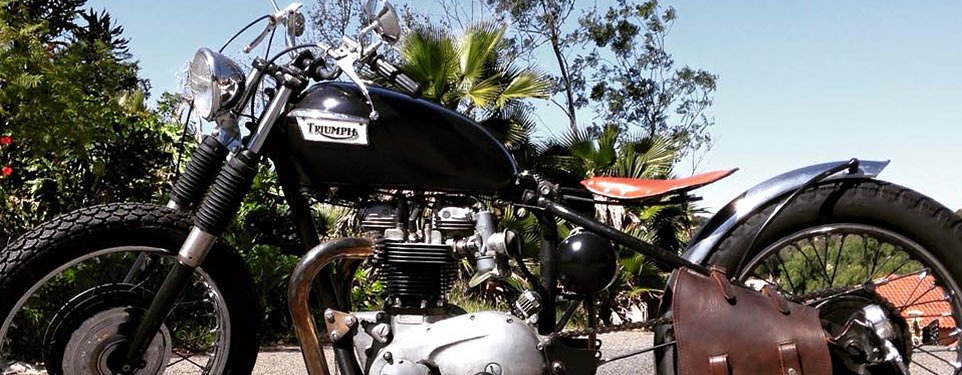Triumph unveiled its latest Bonneville derivation, the Bobber, at a party in London today with the likes of Carl Fogarty and Freddie Spencer. Not only was my engraved invitation apparently lost in the mail, but so was the live stream of the event, for most of its duration, so I can't tell you much about the party. But the motorcycle looks interesting.
Think of the Bobber as what you might come up with if you took a Bonneville T120 and aimed for the stripped-down look that spawned the bobber name in the first place. And if you had far better fabrication skills than I do. Visually, the Bobber is stripped, but in terms of features, it isn't. But that comes later. With a bike like this, you have to start with the styling.

Triumph has clearly paid attention to details: the retro taillight and the minimalist headlight; the ridge running the length of both fenders and the way the rear fender hugs the tire, with no visual connection to the seat; the hard-tail look with the hidden single shock; the old-style battery box held shut with a metal strap; and, not to launch another "fake stuff" controversy, but those sure aren't carburetors perched between the rider's knees, though to the uninformed, they could pass.

Triumph hid the catalytic converter so it could use traditional "peashooter" twin exhausts that aren't the size of pontoons, like what we've seen on some new motorcycles coming out that are built to meet new European emissions standards. The designers also hid wiring and electronics as much as possible to keep the look clean and traditional. There's hardly any plastic and many of the metal surfaces are brushed or polished or otherwise treated. The ignition is located on the side.
The Bobber is not just all looks and no smart thinking, however. It actually offers a level of adjustability that's above average. The solo seat can be moved up or down, forward or aft, to adjust your reach to the ground and the handlebar. Then, you can also adjust the angle of the instrument pod (analog speedometer and a digital display) to match your riding position, without the need for tools.

You also still get the T120's two rider modes, "road" and "rain," with the ride-by-wire throttle, plus traction control that can be turned off. ABS is standard. The Bobber is powered by the 1,200 cc, liquid-cooled Bonneville T120 engine, but different intake and exhaust give it even more low-end torque, according to Triumph.

Triumph clearly aims to keep the customer coming back after the initial sale by offering more than 150 accessories. You can swap the flat handlebar for mini-apes or clip-ons. You can even add optional cruise control.
The Modern Classics line continues to become a bigger part of Triumph as the company rides the wave of popularity in 1960s cafe racer style, 1970s scrambler style and all things nostalgic — now including 1940s bobber style.
Once the blokes over in London recover from their party, maybe they'll let us know about the timing for availability and the price.































 Riders Preferred Membership
Riders Preferred Membership

